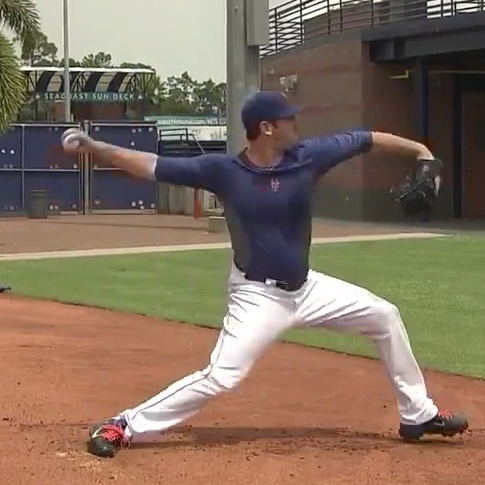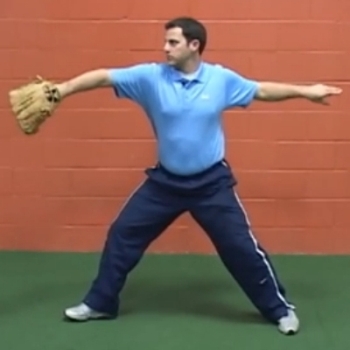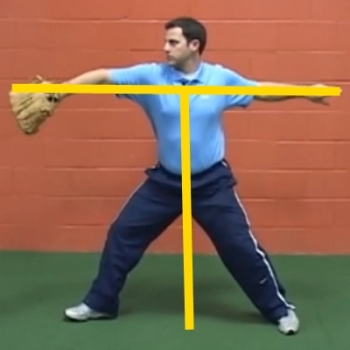Hyperabduction is the term I use to refer to what I believe is an extremely dangerous position and movement pattern.

Josh Beckett
I define Hyperabduction as the pitching arm side humerus at more than 90 degrees of abduction, minimal external rotation, and pronation into -- or worse at -- foot plant.

Matt Harvey
The position that Matt Harvey is demonstrating in the picture above used to be called and taught as the Flex T. However, it is now referred to as the...
These positions, which are encouraged through the use of The Most Dangerous Cue, are problematic because, in my opinion, they don't just significantly increase the risk that pitchers will have elbow problems. Instead, by creating a serious Timing problem, they significantly increase the likelihood that pitchers will have shoulder problems and, even worse, Thoracic Outlet Syndrome.

Flex T
I also call it the Terrible T because, while it will often yield a short-term velocity boost, there is an EXTREMELY high likelihood that it will cause elbow and then shoulder problems.

Terrible T
Hyperabduction is the cause of Matt Harvey's Thoracic Outlet Syndrome and will continue to cause problems, and likely end his career, if he doesn't change anything.

Matt Harvey Demonstrating Hyperabduction
This is a summary piece, but I discuss a number of related topics in these pieces...
As the case of Matt Harvey sadly demonstrates, the lethality of Hyperabduction is increased even further when it is accompanied by cues like...
Hyperabduction
The key attributes of Hyperabduction are that...
- The Pitching Arm Side (PAS) elbow is just above the level of the shoulders.
- Into, and in the worst case at, foot plant.
The Stakes
I believe the incidence of Pitching-Induced Thoracic Outlet Syndrome (piTOS) is hockey-sticking. There were...
- 7 cases of TOS in M/MiLB pitchers from 2001-2015
- 6 cases of TOS in M/MiLB pitchers during 2016 alone.
I discuss why that is a problem in...
The Alternative
I believe Hyperabduction results in part due to a misunderstanding of how Roy Halladay (actually) threw the ball. As a result, the alternative is to study Roy Halladay and understand what I call the Ready Position.